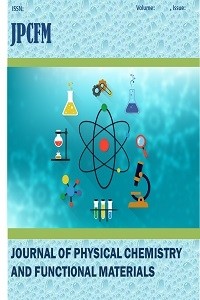The Theoretical Investigation of the HOMO, LUMO energies and Chemical Reactivity of C9H12 and C7F3NH5Cl Molecules
The Theoretical Investigation of the HOMO, LUMO energies and Chemical Reactivity of C9H12 and C7F3NH5Cl Molecules
Highest Occupied Molecular Orbitals (HOMO), Lowest Unoccupied Molecular Orbitals (LUMO), Density Function Theory (DFT),
___
- [1] R.H. Petrucci, F.G. Herring, J.D. Madura, C. Bissonnette,, 1997. General Chemistry: Principles and Modern Applications, 11e.[2] P. Atkins, J. De Paula, J. Keeler,, 2018. Atkins' physical chemistry, Oxford university press.[3] R.A. Mackay, W. Henderson,, 2017. Introduction to modern inorganic chemistry, CRC Press.[4] W.J. Hehre, 2003. A guide to molecular mechanics and quantum chemical calculations, Wavefunction Irvine, CA.[5] W.-K. Li, G.-D. Zhou, T.C. Mak, T. Mak, 2008. Advanced structural inorganic chemistry, Oxford University Press.[6] Frisch MJ, Trucks GW, Schlegel GE, Scuseria GE, Robb MA, Cheeseman JR, et al. Gaussian 09. Wallingford CT: Gaussian, Inc.; 2009.[7] D. Young, 2004. Computational chemistry: a practical guide for applying techniques to real world problems, John Wiley & Sons.[8] M. Nabati, Chemical Methodologies, 1, (2017) 121-135.[9] B. Jursic,, Journal of Molecular Structure: THEOCHEM, 507,( 2000) 185-192.
- [10] G.H. Wagnière, 2012. Introduction to elementary molecular orbital theory and to semiempirical methods, Springer Science & Business Media.[11] L.G. Zhuo, W. Liao, Z.X. Yu,. Asian Journal of Organic Chemistry, 1,( 2012) 336-345.[12] J.L. Teunissen, F. De Proft, F. De Vleeschouwer, Journal of chemical theory and computation, 13,(2017), 1351-1365.
- ISSN: 2651-3080
- Yayın Aralığı: Yılda 2 Sayı
- Başlangıç: 2018
- Yayıncı: Niyazi BULUT
Effect of epoxy resin in synthesis of rubber-metal adhesive
Temperature Effects on the Adsorptıon with Mıcrobeads In Reactıve Black 5 m-Poly (EGDMA-VIM)
Büşra Elif KAPLAN, Ali KARA, Hüseyin Aksel EREN
Physical Properties of Anthra [2,3-b;6,7-b'] Dithiophene Organic Material
Chemical Structural and Vibrational Analysis of Potassium Acetate: A Density Function Theory Study
İbrahim NAZEM QADER, Ahmad MOHAMMAD, Yousif Hussein AZEEZ, Riyadh Saeed AGİD, Henar Sleman HASSAN, Srwa Hashim Mohammed AL-NABAWİ
INVESTIGATION OF HARTREE-FOCK AND DENSITY FUNCTIONAL THEORY OF PLATINUM COMPLEXES
Seda HEKİM, Yousif Hussein AZEEZ, Sinan AKPİNAR
INVESTIGATION OF ELECTRONIC PROPERTIES OF POLY(DEAMST0.70-CO-BMA) COPOLYMER: AB-INITIO APPROACH
